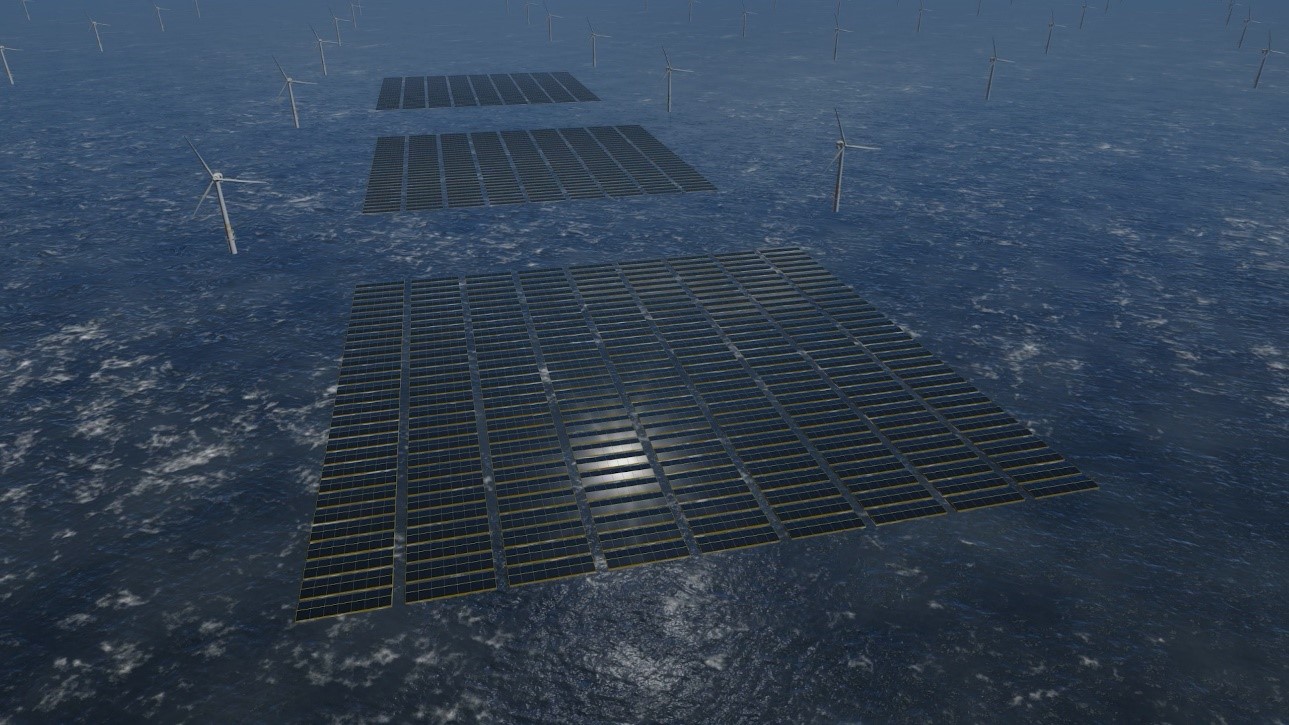Oceans of Energy and 15 leading European partners start project to scale up offshore solar
Oceans of Energy together with fifteen leading European partners announce the start of an EU Joint Industry Project, in which offshore solar technology is scaled up to formats of 150 MW enabling to build Gigawatt scale farms. These building blocks are to become a new standard in offshore energy farms. Placing solar farms within offshore wind farms will make better use of the sea space, increase energy output, provide more continuous power over the seasons and drive down costs for green electricity production and the energy system.


“Oceans of Energy is proud to advance offshore solar towards a real gamechanger in the renewable energy transition, by bringing these standardized, large scale offshore solar farms to the world” says Allard van Hoeken, Founder and CEO of Oceans of Energy. “Offshore solar is becoming a major contributor to the successful energy transition in the North Sea,” he continues. “We are kickstarting the development of a standardized offshore solar building block, which fits right in-between four offshore wind turbines. This allows for optimized multi-source offshore energy farms without competing for scarce and limited land space”.
Oceans of Energy is a pioneer in offshore solar, the company deployed the first in the world offshore solar farm for high waves in the rough Dutch North Sea in 2019. The company is building the first offshore solar farm to be installed within the Shell/Eneco Hollandse Kust Noord offshore wind farm. Its mission is to bring clean and abundant renewable energy in harmony with nature to people living along the coasts worldwide.
“This project will contribute to enable feasible business cases of solar renewable energy offshore”, states Andrea Bombardi, Carbon Reduction Excellence Executive Vice President of RINA. “RINA, thanks to the leading experience in the provision of energy yield assessment services for solar plants and in floating offshore systems, will pioneer the development of a new predictive yield model applicable to this emerging technology. We will bring to the project our competence in ground-native solutions offshore, in static and dynamic analysis on dynamic export cables, in comparative analysis between different power export layouts, in the definition of recycling strategies for PVs and electrical components at the end of their life and in the coordination of EU-funded projects.”
The collaboration coordinated by RINA, between offshore solar developer Oceans of Energy, four technology developers (Solarge, TKF, Pauwels Transformers, SolarCleano), five technical- and environmental consultancies (RINA, ABS, Aquatera Ltd, Aquatera Atlantico, and WavEC), three testing laboratories (MARIN, Fraunhofer CSP, SIRRIS), the marine policy think-tank European Marine Board, and the offshore wind farm developer Vattenfall as potential client for implementation, is aimed to resolve remaining challenges for the rollout of large scale offshore solar into new- and existing wind farms. This includes proving the robustness and performance of the solar panels in offshore conditions, as well as researching the impact on the environment while securing sustainability in the whole value-chain of this emerging industry.
The envisioned result is that project BAMBOO (Build scAlable Modular Bamboo-inspired Offshore sOlar systems) matures the technologies and allows for attracting the funds for the first of a kind 100-200 MW offshore solar farm at a Vattenfall offshore wind farm before the turn of the decade. At which wind farm (development) this will take place still has to be decided.
Lower investments in total energy system predicted
The complementarity of energy patterns of a co-located offshore solar and wind farm allows the farm to use the same grid connection more efficiently, thus reducing the need for investments in expanding the energy system. In addition, the space needed, both on land and at sea, for generating renewable energy can be drastically reduced by using the offshore wind farm space for solar as well. Moreover, the increased scale of offshore solar farms can reduce their environmental impacts per installed solar panel, through a minimal need for anchors on the seabed and centralizing the electricity export cable in a larger floating island.
Support in the development of international standards
The project will contribute to the development of international standards and testing methodologies for offshore solar technology. For this, the innovation program will conduct hydrodynamic assessments at MARIN, climate chamber tests at SIRRIS, tests for PV panels at Fraunhofer, and accelerated lifetime tests based on offshore operations & measurements. Further research will be conducted on predicting and improving the lifetime energy performance. There will also be a focus on measuring and predicting the environmental impact of the technology, including through methods for contributing to nature enhancements and for end-of-life strategies. Furthermore, the activities aim towards internationally aligned policies including for environmental assessment criteria frameworks.